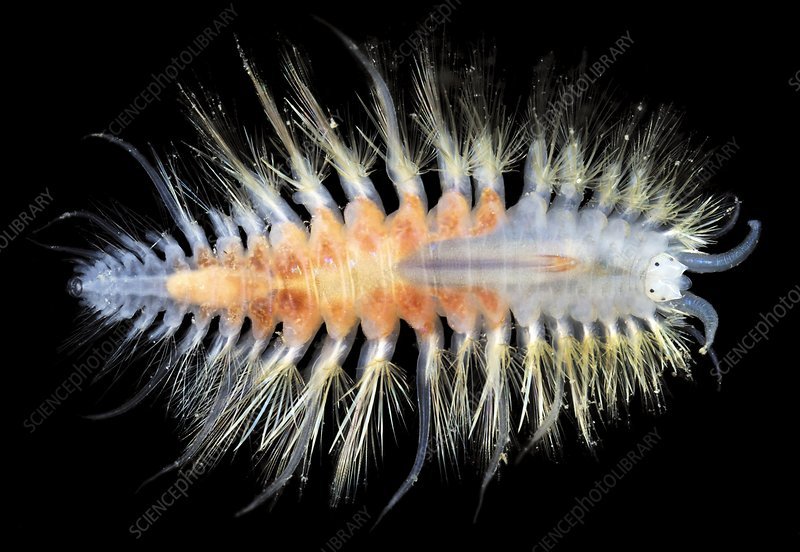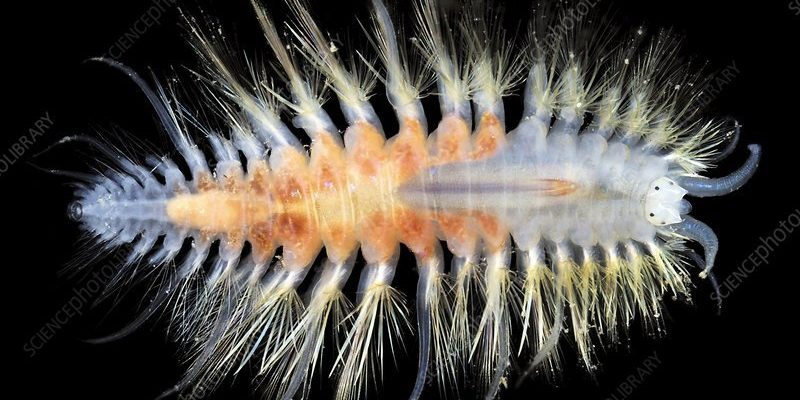
Now, marine polychaetes are a fascinating group of segmented worms found mainly in ocean habitats. They come in various shapes, sizes, and colors, making them a diverse bunch. Some can even be quite striking! These worms are not just fascinating to look at; they also play vital roles in nutrient cycling, sediment turnover, and serving as food for various marine animals. So, let’s dive deeper and explore their fascinating world and the essential roles they play.
What Exactly Are Marine Polychaetes?
Marine polychaetes belong to the class Polychaeta, which is part of the annelids family. You might be picturing them as wriggly little creatures, and you wouldn’t be wrong! They have numerous bristles, called chaetae, which help them move through their watery home. These worms are typically found in various marine habitats: from sandy shores to the deep ocean floor.
You may be wondering about their size. Well, they can range from just a few millimeters to several meters long! Yes, you heard that right—a few can even measure over 3 feet! This variety reflects the adaptability of polychaetes to different environments. Some live in the sediment, others attach themselves to rocks, and some even float in the water column.
There are two main groups of polychaetes: errant and sedentary. Errant polychaetes are the adventurous type, often swimming and crawling in search of prey, while sedentary polychaetes prefer to stay in one place, using their structures to filter feed or capture food. Each type contributes uniquely to its ecosystem.
The Role of Marine Polychaetes in Nutrient Cycling
One of the most critical functions of marine polychaetes is their role in nutrient cycling. When they burrow through sediments, they help mix and aerate the soil, allowing for better oxygen flow. This process benefits various microorganisms living in the sediment, creating a healthier environment for all.
Think of marine polychaetes as nature’s little gardeners. Just like how gardeners prepare soil for planting, these worms ensure that nutrients are available for plants and other organisms in the ecosystem. They consume organic matter, breaking it down into simpler forms that can be reused by other creatures.
This nutrient cycling is crucial for marine ecosystems. A well-balanced nutrient cycle supports everything from tiny plankton to large fish, making polychaetes essential for maintaining ocean health. Without their tireless work, nutrient build-up could lead to poor water quality and affect the entire food chain.
Polychaetes and Sediment Turnover
Sediment turnover is another significant role played by marine polychaetes. You can think of it like a giant mixer in a kitchen; these worms keep things moving! As they burrow and migrate, they help break down sediment layers. This activity prevents the sediment from becoming overly compacted, which can be harmful to many marine organisms.
Thanks to their work, important nutrients get redistributed throughout the ocean floor. This mixing process also helps create habitats for other marine life, such as corals and bivalves. When the sediment is turned over, it creates spaces where these organisms can grow and thrive.
Additionally, the burrows created by polychaetes provide excellent shelter for other small sea creatures. They act like cozy apartments in a bustling city, ensuring diverse life flourishes in one area. Their burrows can also help reduce the impacts of ocean currents, further stabilizing the ecosystem.
Food Source for Marine Life
Let’s not forget that marine polychaetes are an essential food source themselves! They inhabit the diets of various marine animals, from fish to seabirds. When you think about it, these worms are a significant part of the marine food web.
For many fish, polychaetes are a tasty snack. Some fish species have adapted to hunt and forage for these worms, demonstrating the interconnectedness of life in aquatic ecosystems. The presence of healthy polychaete populations often indicates good water quality, which also means a thriving environment for other marine animals.
Plus, during certain life cycles, they release larvae into the water, which can drift for miles, providing nourishment to even larger marine creatures. It’s like sending out invitations to a giant dinner party, where everyone gets a taste of the feast!
Environmental Indicators: What Polychaetes Tell Us
Interestingly, marine polychaetes also serve as environmental indicators. Their presence, or lack thereof, can provide insight into the health of marine ecosystems. Scientists often study polychaete populations to assess water quality and sediment conditions.
For example, if a particular species of polychaete thrives in an area, it usually means the environment is stable and supportive of life. However, a sudden decline in polychaete diversity could indicate pollution or habitat degradation. This information is vital for conservation efforts, helping researchers and policymakers make informed decisions to protect marine habitats.
In a way, you could say that polychaetes are like the canaries in the coal mine for the ocean. Their health signals can guide us in understanding broader environmental changes, allowing us to take action when needed.
The Impact of Human Activities on Polychaete Populations
Unfortunately, human activities can create challenges for marine polychaete populations. Coastal development, pollution, and climate change can all impact their habitats. For instance, sediment pollution can reduce the number of suitable living conditions for polychaetes, leading to a decline in their populations.
Overfishing affects the balance in marine ecosystems, possibly leading to a decrease in polychaetes as their natural predators are removed. To make matters worse, climate change can alter water temperatures and salinity, which can affect where polychaetes can live and thrive.
It’s essential for us to acknowledge these impacts. Protecting the ecosystems where polychaetes live not only benefits them but the entire marine environment. By taking steps to reduce pollution and overfishing, we help ensure the health of these remarkable little creatures.
In conclusion, marine polychaetes are fascinating little worms with a big impact on our underwater ecosystems. From nutrient cycling to sediment turnover and providing food for marine animals, they play essential roles in keeping our oceans healthy and vibrant.
Understanding their contributions gives us a greater appreciation for the delicate balance of life in our aquatic ecosystems. So, the next time you think about life in the ocean, remember the humble marine polychaete. They might not be on everyone’s radar, but they’re certainly among the unsung heroes of our planet’s health. Let’s work together to protect these amazing creatures and the vital roles they serve in our world.

